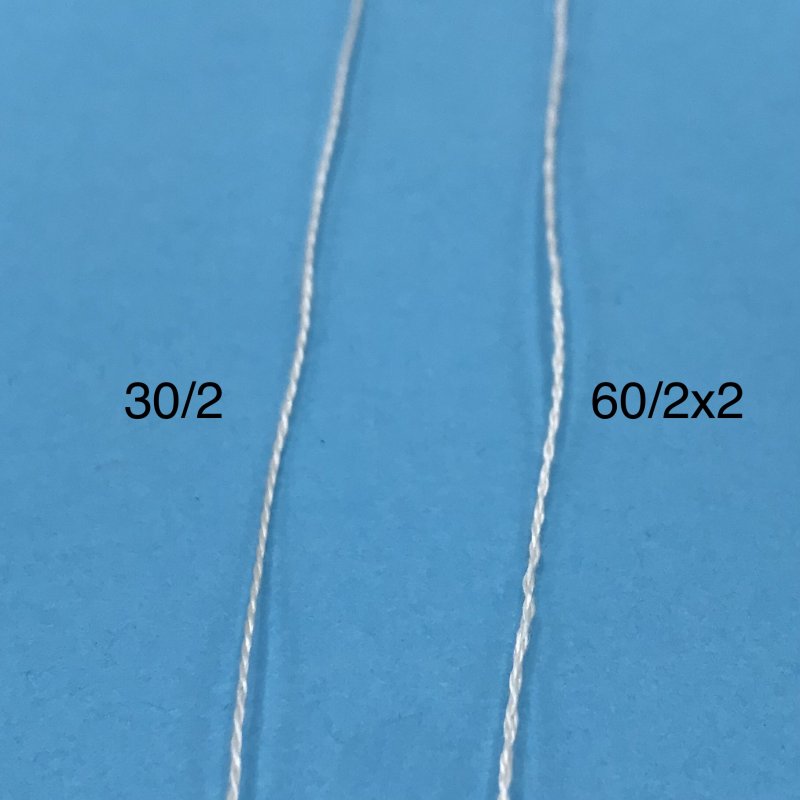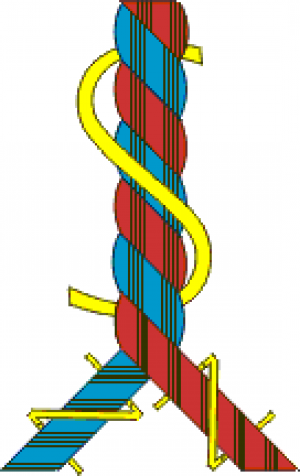
So many of our favorite yarns are plied…usually a 2-ply but often a 3-ply. But what is a cabled yarn? And why would I want it?
Let’s back up a second for a super-simplified review of plied yarns. In the USA, yarn ply will refer to the number of spun strands that make up the final yarn. A yarn made from two singles will be called a 2-ply yarn. This is designated as xx/2 in the US, and 2/xx in much of the rest of the world.
The “xx” or “yarn count” is the thickness of the strand. Yarn count gets tricky as it is fiber specific and may be from different count systems. For example, 8/2 cotton (traditional count system) will be similar in size to 20/2 Nm spun silk (metric system).
Treenway Silks spun silks use metric system yarn count. Kiku, 20/2 Bombyx silk, is Treenway Silks’ most popular yarn.
Now, back to cabled yarns
Kate Larson, editor of Spin Off magazine, explains a “cabled yarn construction combines at least four singles that have been plied with several layers of twist.”
A very common cabled yarn is made from TWO 2-ply yarns that are plied together. [see diagram at bottom]
For example, Gekkō silk yarn is made by plying two 60/2 yarns together. This is written as “60/2x2” and spoken as “sixty over two by two.” The word “over” is optional, but I always use it so it doesn’t sound like I’ve said “sixty-two by two,” which has a completely different meaning.
I find that often people will see “60/2” and stop reading, missing the “x2” part, so they think the yarn is half the thickness that it really is.
In general terms, Gekkō (60/2x2) is the same size as Taiyō 30/2 spun silk. In theory, the 60/2x2 will be slightly stronger than 30/2, but silk is so strong that it’s an immaterial difference. In my opinion, the important difference is the ‘look’ of the yarn.
Taiyō (30/2) will be a bit smoother and have a bit more shine. Gekkō (60/2x2) has a more textured surface will have a bit more sparkle.
For the most part, I consider Taiyō (30/2) and Gekkō (60/2x2) yarns to be interchangeable. Click here to see these hand-dyed yarns.
However, if I were weaving satin, I would choose Taiyō (30/2).
But if I were weaving a structure with a ground cloth and pattern weft (such as summer and winter or overshot), then I prefer Gekkō (60/2x2) for the warp and tabby weft as I feel its texture makes a good background that allows a plied pattern weft to “sing”.
Here's the list of Treenway Silks' cabled yarns (links are to the natural/undyed skeins):
Jorie II, 20/2x5, 100% spun bombyx silk
Margaret, 60/2x6, 100% spun bombyx silk
Gekkō, 60/2x2, 100% spun bombyx silk
Resilience, 60/2x2, 60% spun bombyx silk/40% retted bamboo
Silken Cloud, 60/2x2, 70% spun bombyx silk/30% cotton


